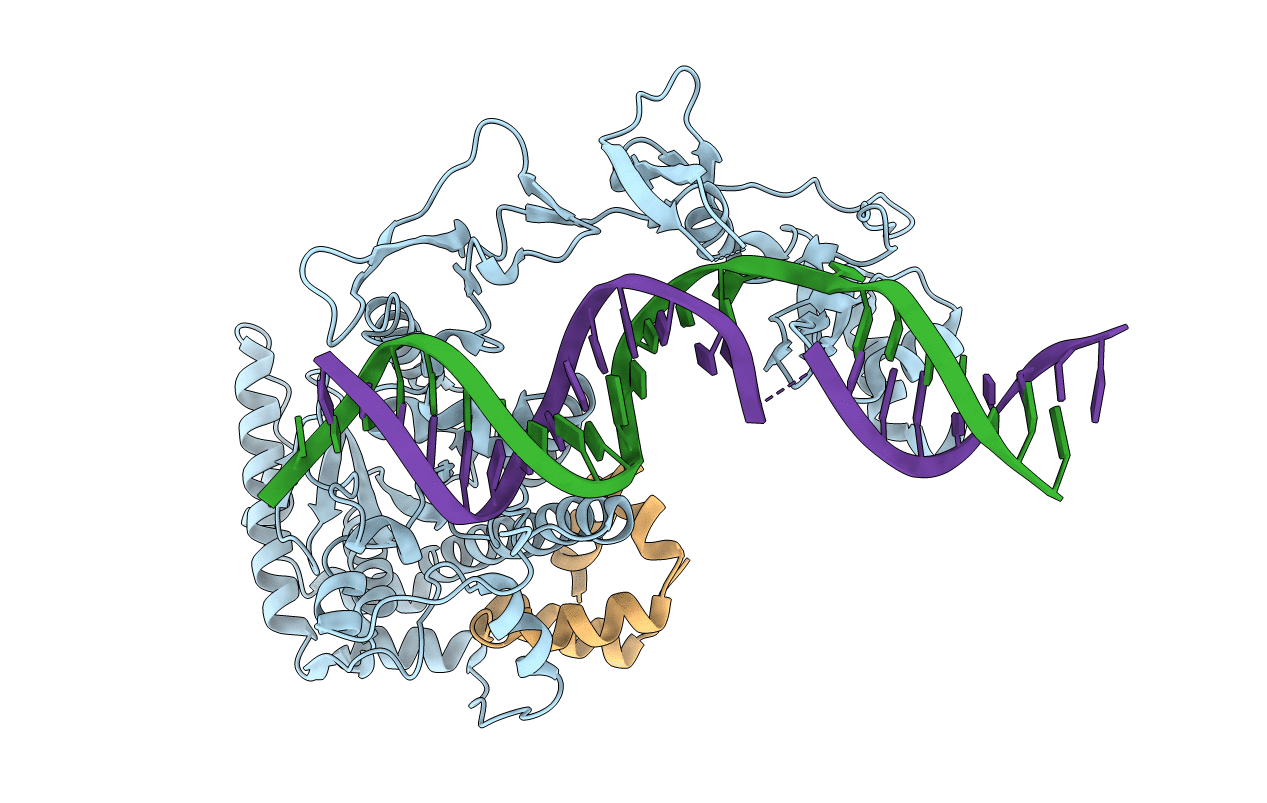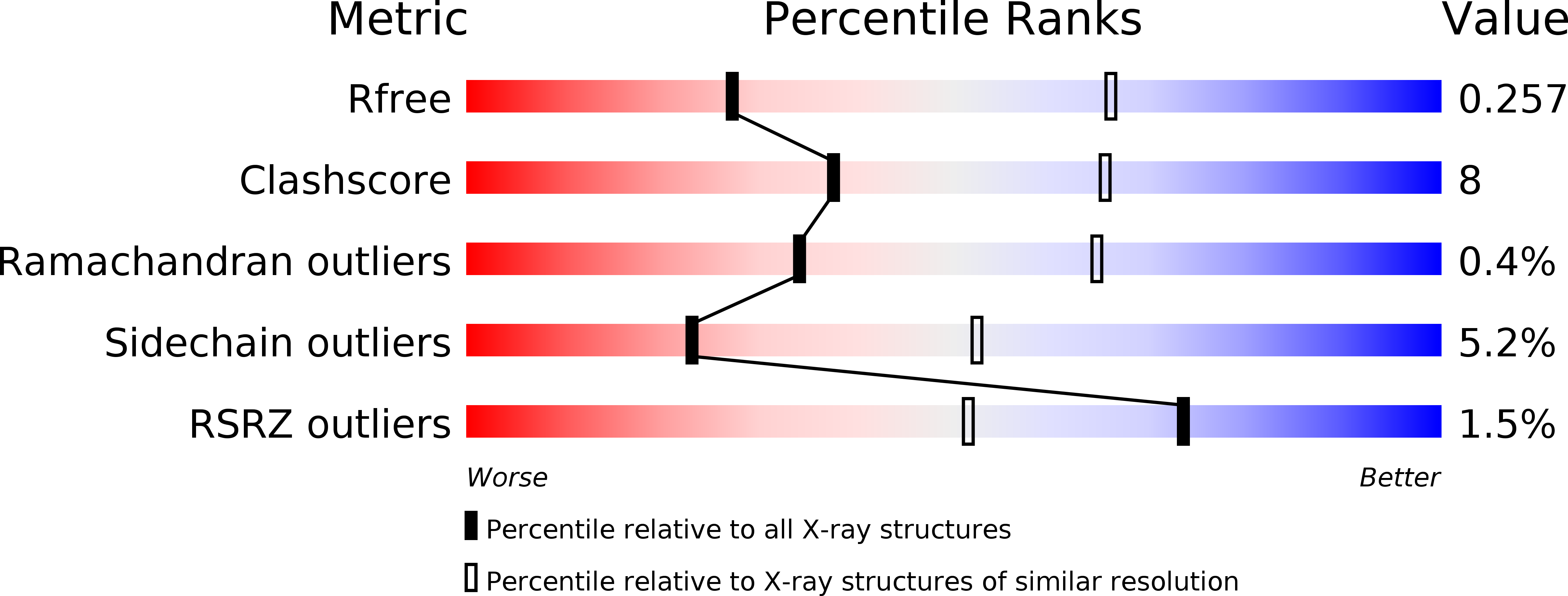
Deposition Date
2015-03-02
Release Date
2015-03-11
Last Version Date
2024-10-23
Entry Detail
PDB ID:
4YIR
Keywords:
Title:
Crystal structure of Rad4-Rad23 crosslinked to an undamaged DNA
Biological Source:
Source Organism:
Saccharomyces cerevisiae (strain ATCC 204508 / S288c) (Taxon ID: 559292)
synthetic construct (Taxon ID: 32630)
synthetic construct (Taxon ID: 32630)
Host Organism:
Method Details:
Experimental Method:
Resolution:
3.05 Å
R-Value Free:
0.25
R-Value Work:
0.19
R-Value Observed:
0.19
Space Group:
P 41 21 2


